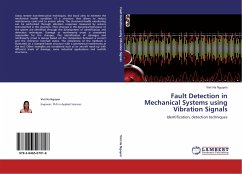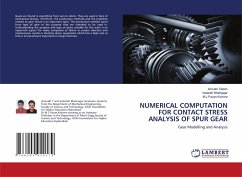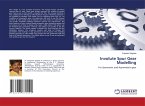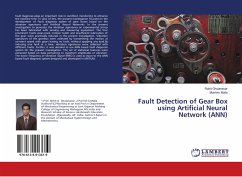Gears are one of the most common and important machine components in many rotating machines. Gears my fail in many different ways and can be broadly classified as localized (e.g. pitting, spalls and crack etc.) and distribute defects (e.g. profile errors, surface roughness etc.). An early detection of incipient gear failure is required to achieve high reliability and to prevent breakdown. Gear failure can be predicted by measuring the changes in vibration level. Dynamic modeling of the gear vibration is a useful tool to study the vibration response of a geared system under various gear parameters and operating conditions. Defects can be simulated in the dynamic model to see its effects on vibration response. The vibration signal stemming from a gear pair is complex in nature. Therefore, a suitable signal processing technique is necessary to extract defect information covered under noise.








